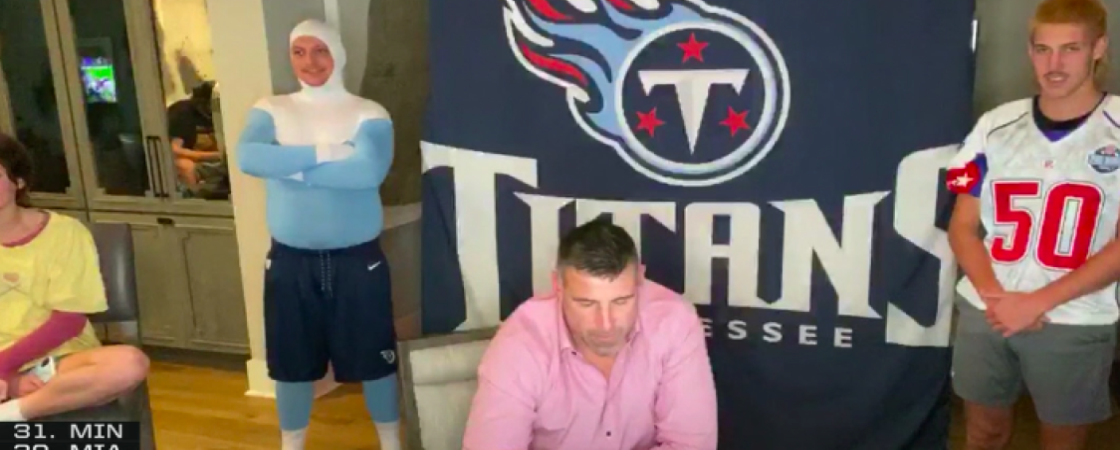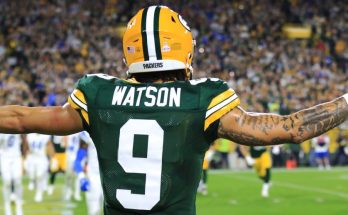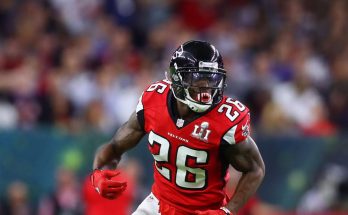Every year, it seems like all drafting just comes down to executing a series of rules for your drafts in order to find fantasy football glory. With that in mind, I’ve taken a look deep inside myself to find a list of five dos and don’ts for 2021 fantasy football drafts. If you follow these basic steps, then you should be able to figure out where you should go in your draft. Think of these like the Pirate’s Code… more like guidelines than actual rules. However, these are the rules I will live by to draft this season, and I hope you can learn from them, as well.
Don’t Draft What You Can Pick Up
I keep saying this, and it goes with one of my “do” list tomorrow. A lot of time I see people talking about drafting solid WR3 and WR4 for their roster. Don’t do this. I did a study on #3 wide receivers after the 2020 season, and only three-of-twelve actually went between WR25 and WR36 according to FantasyPros ADP. That means that drafting a WR3 as a WR3 is a fool’s errand. Don’t take your Jarvis Landrys or your Odell Beckhams or other “solid” WR3 values here. It’s a waste of your time, and a waste of a draft pick to do so. I won’t go into heavy detail about my WR3 study, but you can find it here.
This also applies to backup quarterbacks (not a guy you draft to platoon, a true backup) as well as tight ends in most leagues. These players will be freely available later in the season in most of your leagues, and the opportunity you lose by holding a second quarterback or tight end while not moving Josh Allen and/or Darren Waller out of your starting slot greatly reduces your upside. You can find backup tight ends, backup quarterbacks, and plug-and-play depth guys on your waiver wire in most leagues. Don’t draft them, you’re wasting upside.
If your software allows it: leave the draft without a kicker and a defense. Add upside guys in muddied situations. Do you want Rhamondre Stevenson or Robbie Gould right now? Quez Watkins or the Chargers’ DST? That reminds me…
Don’t Break the Seal (Kicker/DST)
Don’t be the first to draft one of these two positions. A lot of people will say to not take them until the last two rounds and I agree… sort of. If there are difference-making options still on the board in your third-to-last round, and your league dictates a kicker and defense come off the board, then go ahead and get difference makers. If you leapfrog everyone by one round and ending up with Harrison Butker and the Rams DST, then you’ll be very happy. And, as a quirk of how this would play out, you still have shots at your hot sleeper candidates. I call it going big (drafting them a round early) or going home (see the end of tip one).
But, by and large, someone will take the Rams in round 8 and Justin Tucker in round 11. Let them have them. It just means more players come to you. Speaking of players coming to you…
Don’t Run, Walk
The worst thing you can possibly do is draft a player at the end of a run. What is a run? Have you ever been in a draft where one quarterback comes off the board? Then another? And another? And pretty soon you’re staring at Andy Dalton as your starting quarterback? “Well,” you figure, “I have to get Andy Dalton here, or else I’m screwed.”
Buddy, you’re already screwed. You have to pivot your draft strategy to go ahead and Trust the Process with a couple of late quarterbacks to find your starter. The worst possible thing you can do is zig while everyone else also zigs. If you’re at the end of the run, and you reach on a starter, you’re generally giving away value.
You’re also not punishing players who needlessly bought into the run. If there’s a top-six QB run and you reach in with QB7 by ADP, Justin Herbert, instead of taking Diontae Johnson or Travis Etienne, you’re leaving value on the table. By taking a less optimal player earlier, you’re allowing the players who bought into the run to recover some of that value they gave away by getting back in with a good player.
Don’t buy into the runs. Stick to your guns, and learn to pivot. Also, don’t fear an empty roster spot in a onesie position (where you start only one player). If everyone else has that spot filled, then the value is more likely to drop. Speaking of value drops…
Don’t Draft a Middle-Class Tight End
The tight end studs go in the first two rounds: Travis Kelce, Darren Waller, and George Kittle. Then you have the near studs, and then everybody else. You have to decide if you want to dip into the studs (Kelce/Kittle/Waller), the near studs (Hockenson/Andrews/Pitts) or if you want to punt the position entirely. Guys like Noah Fant, Robert Tonyan, Dallas Goedert and Logan Thomas all go inside the first nine rounds… but there’s no point.
Last year we called them the “Middle-Class” of tight ends. This year, we call them The Blob. The Blob starts somewhere after George Kittle & Darren Waller and ends somewhere before Dawson Knox. Anyone in this range can finish in any order and you really wouldn’t be that surprised by where they end up. You can be disappointed. But if the Lions’ offense is a mess, and if the Falcons don’t get Kyle Pitts going like they thought they could, and if the Ravens’ passing attack doesn’t develop Mark Andrews into a super-stud, would any of that really surprise you? That’s all inside the reasonable range of outcomes for the position.
Everyone has a lot of question marks surrounding them, and everyone else has their cheerleaders and their detractors. I’m not particularly interested in reaching on a middle-class tight end in a single-digit round. If one falls to me in round ten or later, I’m hopping on them. But spending up for the top of a mostly similar tier. Instead, you want to snag your handcuff running backs in that range. Your Tony Pollards and Alexander Mattisons, and what not… or do you?
Don’t Handcuff
Psych! You don’t want to handcuff your running back. After all, we are playing to win, not playing to lose, right? So, if you’re playing scared that Alvin Kamara will miss a week, and he does miss a week, your team mostly stays the same if you plug in Latavius Murray. But, at the same time, what if instead of Latavius Murray you had drafted James Robinson in 2020? Does that seem a little more fun? Does that seem like something you want to do instead?
Me? I’m an optimist. I am going to assume my backs won’t get hurt. I’m also a realist, so I understand that some backs will get hurt, but the odds are someone else’s back will get hurt. Mathematically, it makes sense. I have 1/12 of the running backs, and everyone else has 11/12. So by pure logic, I should handcuff their running backs. If an injury happens, my team gets better.
I’m not trying to not lose, I’m trying to win.
There you have it! Those are the Don’ts for your fantasy football draft. This bad boy is a little longer than I had hoped, so digest it for a bit and I will be back with the Don’ts list here!





One Comment on “Fantasy Football Draft Strategy: 2021 Dos and Don’ts, Part 1”